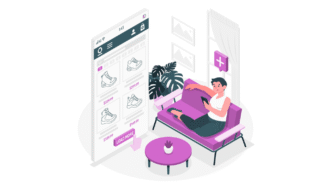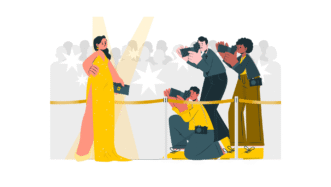LESSON OVERVIEW
In this Speaking Class students talk about books and reading in general, watch a video, have a discussion and brainstorm ideas on how to make reading more popular.
60 minSpeaking ClassUnlimited Plan
This is a Speaking Class worksheet. It includes a variety of tasks that let your students practise their speaking skills. This lesson format does not focus on grammar or vocabulary. Learn more about it here.
WARM-UP & VIDEO
The Speaking Class starts with a warm-up. There is an optional activity for teachers to do before the main discussion. They can ask students to name different things related to books and reading (e.g. positive/negative characters, a series of books, a book that was made into a film, a book with a happy ending, etc.). There is also another warm-up activity in the worksheet. Students read the statistics and decide whether they are true or false. Students can also discuss whether any of the facts surprised them. Then, there is a speaking activity which provides students with a chance to talk about books and their experiences. Students also mention reading paper books. After that, they move on to the activities related to a video. First, students complete the statement about book lovers with their ideas. Then, they watch the video and add more ideas.
ACTIVITIES TO TALK ABOUT BOOKS
In this part of the lesson, students talk about books more. First, they look at some reading habits (e.g. make notes in a book or keep a book clean and neat, buy books from bookshops or buy books online, read on public transport or read at home or in a quiet place, etc.) and choose the ones that are relevant to them. Then, students discuss ideas on how to encourage people to read more. They talk about literature at school, reading habit trackers, YouTube channels with book reviews and book clubs. Students discuss each idea by answering questions. Finally, students look at different campaigns that promote reading and decide whether they are good. Students finish the lesson with a brainstorming session during which they read some situations and come up with ideas on how to help.
Subscribe to unlock these and many other Standalone lesson lesson plans with the Unlimited planWORKSHEETS














Hello,
Great lesson. It got my students who love books very open to talk and share. I was curious to know if these are true or false. I checked the teacher’s lesson and did not find the answers either.
Bill Gates reads 50 books a year.
Women read (a lot) more than men.
The countries where people spend the most time reading are in Asia.
One in every three teenagers has not read a book for pleasure in the last year.
Thanks!
Hi! Thanks for your comment 🙂
The facts are true, there’s a comment about it in a teacher’s version and a link to more facts like that.
Hello.
I can’t open the student’s version. The link takes me to my account.
Thanks.
Hello! If you’re still experiencing trouble accessing the student’s version, please email us at [email protected] 🙂
This is a very broad question. But, here goes. Any good reading lists for ESL young adults that are tried and true?
Unfortunately, we don’t have a list like that. But if we ever come across one or compile it, we’ll know who to share it with 🙂
I’m unable to download the teacher’s version because it says the file is infected.
The file is safe and not infected. Please try downloading it once more.